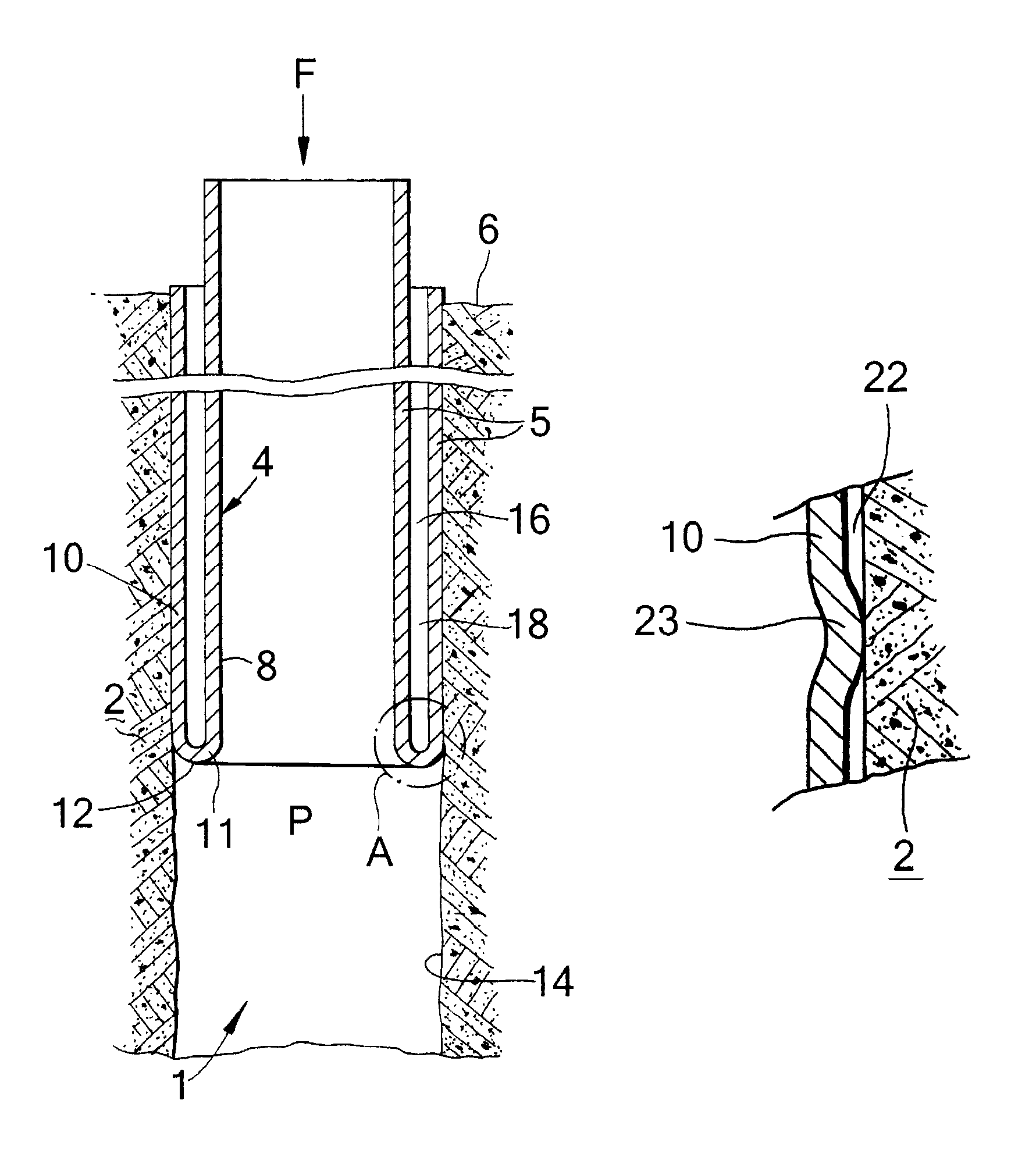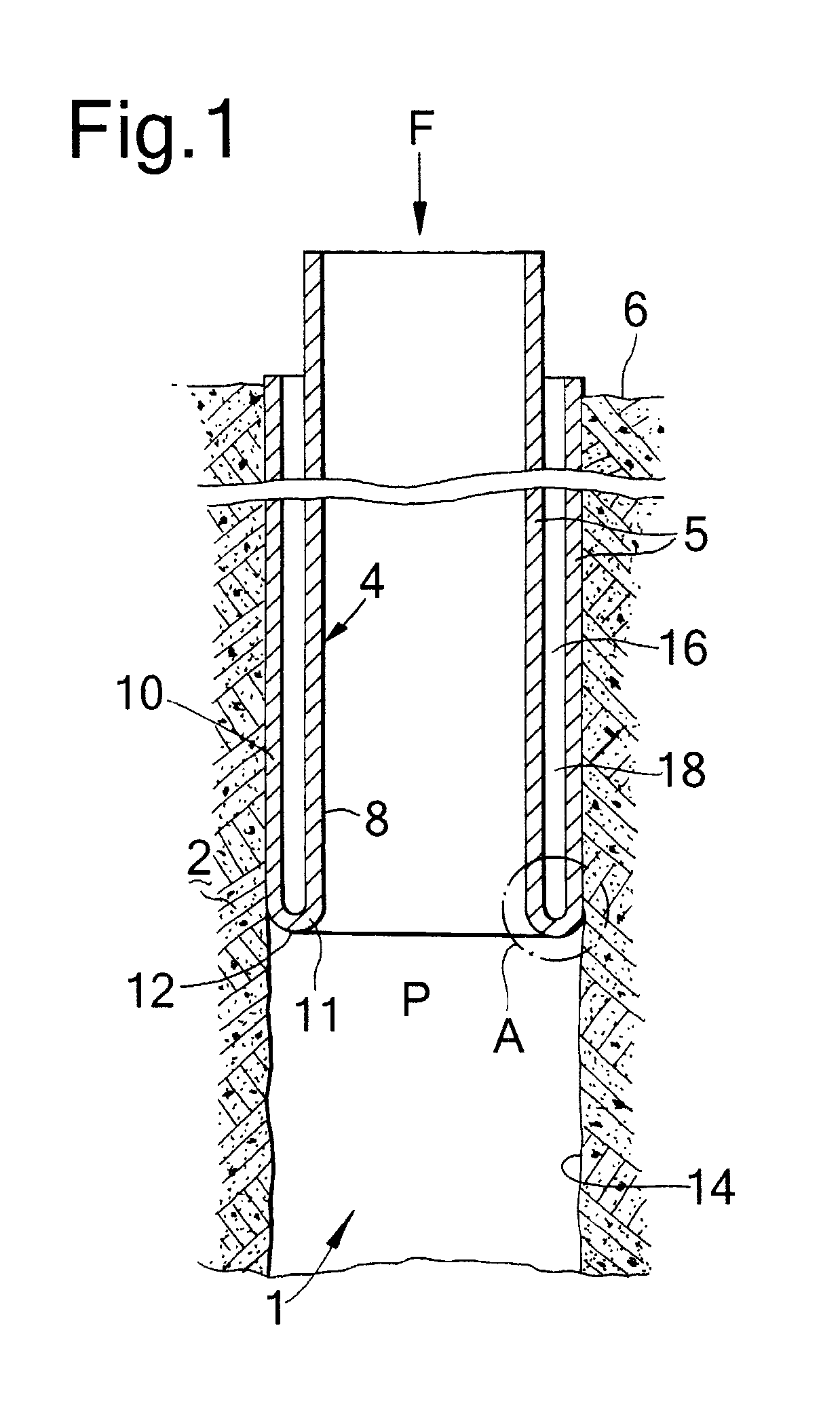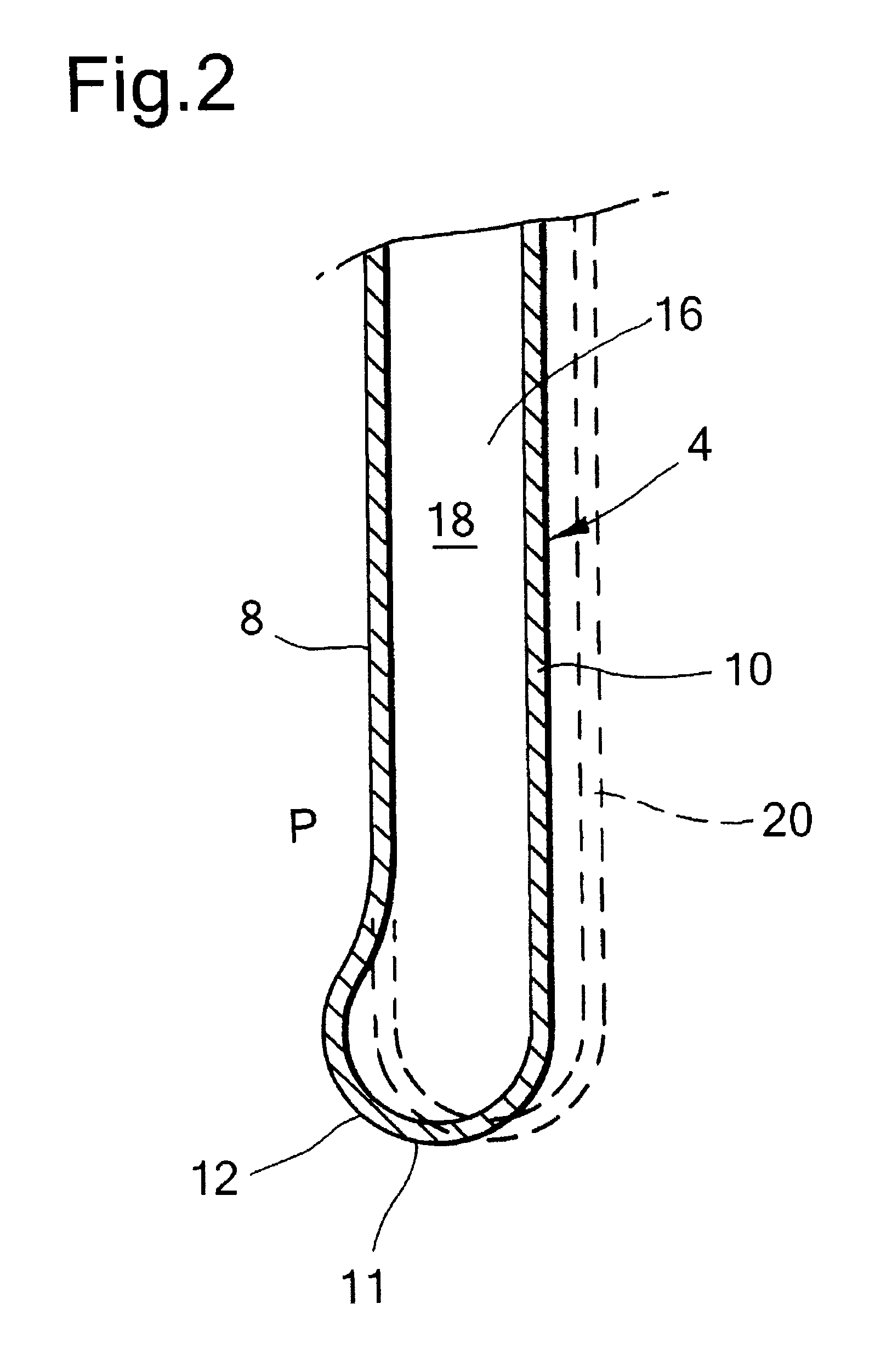Method of expanding a tubular element in a wellbore
a tubular element and wellbore technology, applied in the direction of drilling pipes, rotary drilling, borehole/well accessories, etc., can solve the problems of high friction between the expander and the tubular element, the expander becomes stuck in the tubular element, and the cross-sectional wellbore size available for oil and gas production, etc., to achieve effective inside rotation, increase fluid pressure, and control the diameter of the expanded tubular section
- Summary
- Abstract
- Description
- Claims
- Application Information
AI Technical Summary
Benefits of technology
Problems solved by technology
Method used
Image
Examples
Embodiment Construction
[0030]Referring to FIG. 1 there is shown a wellbore system whereby a wellbore 1 extends into an earth formation 2, and a tubular element in the form of liner 4 extends from surface downwardly into the wellbore 1. The liner 4 has been partially radially expanded by eversion of its wall 5 whereby a radially expanded tubular section 10 of the liner 4 has been formed of outer diameter substantially equal to the wellbore diameter. A remaining tubular section of the liner 4, in the form of unexpanded liner section 8, extends from surface 6 concentrically into the expanded tubular section 10.
[0031]The wall 5 of the liner 4 is, due to eversion at its lower end, bent radially outward and in axially reverse (i.e. upward) direction so as to form a U-shaped lower section 11 of the wall 5 interconnecting the unexpanded liner section 8 and the expanded liner section 10. The U-shaped lower section 11 of the liner 4 defines a bending zone 12 of the liner.
[0032]The expanded liner section 10 is axial...
PUM
 Login to View More
Login to View More Abstract
Description
Claims
Application Information
 Login to View More
Login to View More - R&D
- Intellectual Property
- Life Sciences
- Materials
- Tech Scout
- Unparalleled Data Quality
- Higher Quality Content
- 60% Fewer Hallucinations
Browse by: Latest US Patents, China's latest patents, Technical Efficacy Thesaurus, Application Domain, Technology Topic, Popular Technical Reports.
© 2025 PatSnap. All rights reserved.Legal|Privacy policy|Modern Slavery Act Transparency Statement|Sitemap|About US| Contact US: help@patsnap.com



